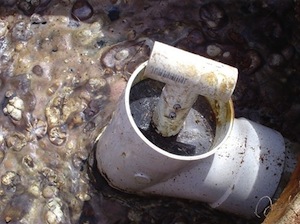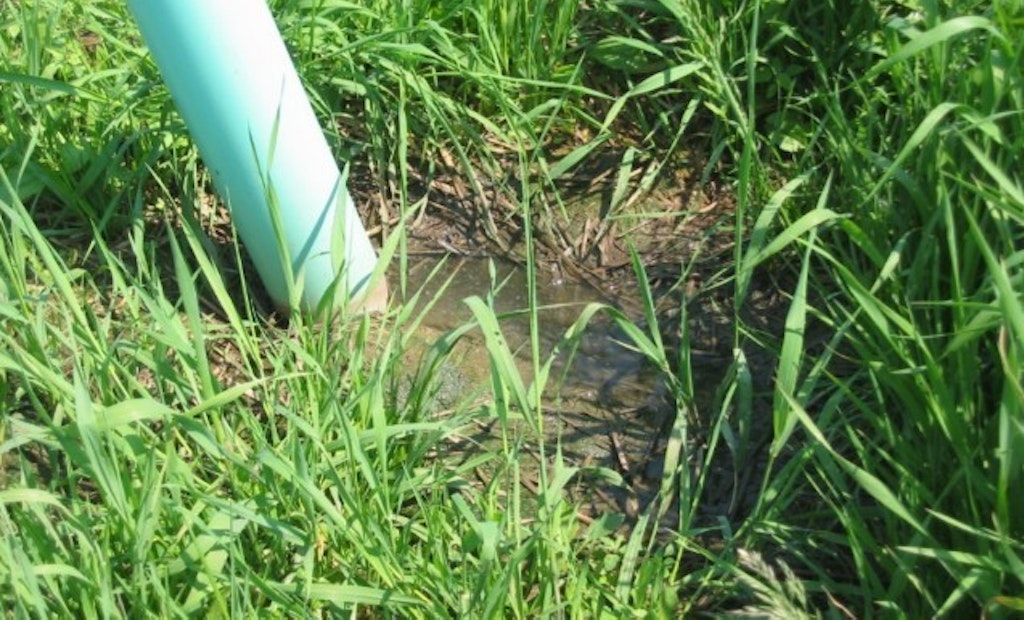Interested in Systems/ATUs?
Get Systems/ATUs articles, news and videos right in your inbox! Sign up now.
Systems/ATUs + Get AlertsOften a property owner will contact you asking if you can repair their system. They are frequently looking for the lowest cost option to deal with a problem. Ultimately, there are some questions that need to be asked and answered to determine if a repair is warranted or if a new system is needed. If the repair doesn’t ultimately solve the problem long term, they might be better served by putting the repair funds toward a new system.
A failure analysis is critical to understand why a septic system is not functioning properly and to determine the root causes of the problem. Septic systems can malfunction for a variety of reasons. Remedial actions or repairs may be effective only after properly troubleshooting or diagnosing a system for potential factors that may have contributed to the malfunction.
Many problems can be caused by the owners themselves because of improper use of the system. Other malfunctions may be due to poor design and/or construction practices. Finally, there can be problems due to improper maintenance of the system. Whatever the suspected cause, a thorough analysis of the reason(s) for system malfunction is needed before any major repair or remediation is attempted. Some repairs are absolutely necessary to system performance while others are optional that can lead to increased performance and longevity. Even during a normal maintenance visit, suggesting repairs to increase longevity is a great opportunity to update older systems and increase profits.
As a septic professional you will need to evaluate the type of failure and determine the potential factors that may have contributed to the system malfunction. Property owners must be aware that when a repair or remediation practice is used to correct a failure from a clogged biomat, only the conditions are fixed; the cause of the failure may not be corrected. Therefore, all potential causes should be identified and appropriate corrective actions taken to prevent recurrences. Otherwise, the effectiveness of the remediation effort may be poor and its impact short-lived.
Failure Analysis Procedure
1. Start with a review of the permit and as-built or record drawing. This may include the initial new construction permit, a repair permit, an operating permit, or a permit for some other system modification. This will provide information on system design, system component settings and system component locations. If the issue is a wet soil treatment area we need to look closer at the system age and sizing. If the system is 5 years old, a repair is much more likely than for a system that is 20-plus years old.
2. Then review the monitoring and maintenance the system has received (or not received) throughout its life. If the system has had little to no maintenance, the likelihood of a repair being successful is reduced. Often, if you haven’t been doing the maintenance and the property has changed hands, this information may be hard to obtain.
3. A determination of the actual wastewater flow and a comparison to the design flow is a critical next step. How many gallons per day is the system designed for versus how much water is going out to the system on a daily basis? To truly answer this question you will need actual flow data. This could be obtained from an event counter, running time clock or flow measurement in the home. The number of people in the home can also be used as a rough estimate of flow. The hydraulic loading to the system could also be elevated by septic components that leak, particularly the septic tank.
 4. Determination of organic loading rates and a comparison to the design loading rates is needed on many systems as well. With a septic tank followed by soil treatment it is assumed the organic loading as measured by BOD, TSS and FOG is within normal limits (170 mg/L, 60 mg/L, and 25 mg/L respectively). If the loading has been above normal due to use or maintenance issues, this may have led to a clogged soil interface. This step may involve discussing use-related issues if the septic tank indicates it is not performing properly or if there are items being disposed of improperly. If an advanced treatment unit was part of the design to lower the organic loading, is it performing properly?
4. Determination of organic loading rates and a comparison to the design loading rates is needed on many systems as well. With a septic tank followed by soil treatment it is assumed the organic loading as measured by BOD, TSS and FOG is within normal limits (170 mg/L, 60 mg/L, and 25 mg/L respectively). If the loading has been above normal due to use or maintenance issues, this may have led to a clogged soil interface. This step may involve discussing use-related issues if the septic tank indicates it is not performing properly or if there are items being disposed of improperly. If an advanced treatment unit was part of the design to lower the organic loading, is it performing properly?
5. A field assessment of all system components for performance and compliance, including any mechanical components, must be performed. As part of this evaluation, make sure you evaluate the entire system. You may identify immediately that a pipe is broken and replacing the pipe will allow that system to continue to function; but if the rest of the system is old and outdated, it may be time for a new system. Is the septic tank watertight? Were proper materials used, particularly clean rock and/or sand?
.png) 6. A review of the soils is needed to confirm that the soil descriptions in the design are accurate. If a soil evaluation is not included in an existing permit, an evaluation should be done to determine the soil characteristics and to locate any limiting layers in the soil that may be present. If the incorrect loading rate was chosen based on texture/structure or percolation rate, the system may be undersized. If the system does not meet the separation to the limiting condition, there may not be adequate oxygen available to treat or accept the wastewater. It could also be that during the construction of the system, the soils were damaged due to compaction or smearing in the soil treatment system.
6. A review of the soils is needed to confirm that the soil descriptions in the design are accurate. If a soil evaluation is not included in an existing permit, an evaluation should be done to determine the soil characteristics and to locate any limiting layers in the soil that may be present. If the incorrect loading rate was chosen based on texture/structure or percolation rate, the system may be undersized. If the system does not meet the separation to the limiting condition, there may not be adequate oxygen available to treat or accept the wastewater. It could also be that during the construction of the system, the soils were damaged due to compaction or smearing in the soil treatment system.
7. Finally you will determine the factor(s) that contributed to the failure. After completing a through failure analysis, a recommendation can be made to the properly owner laying out the likely problems and potential solutions, including a repair or possible system replacement. Be sure this recommendation meets all local regulations.
About the Author
Sara Heger, Ph.D. is an engineer, researcher and instructor in the Onsite Sewage Treatment Program in the Water Resources Center at the University of Minnesota. She presents at many local and national training events regarding the design, installation and management of septic systems and related research. Heger is education chair of the Minnesota Onsite Wastewater Association (MOWA) and the National Onsite Wastewater Recycling Association (NOWRA), and serves on the NSF International Committee on Wastewater Treatment Systems. Send her questions about septic system maintenance and operation by email to kim.peterson@colepublishing.com.
This article is part of a series on repair and remediation:
- To Repair Or Not To Repair … That is the Question
- How to Evaluate an Onsite System for Remediation
- Remediation Options: Technology to the Rescue
- Low-Tech Solutions to Extend System Life
- Homeowner Education is Critical During a System Repair
- System Management: The Key to Successful Septic Repair






